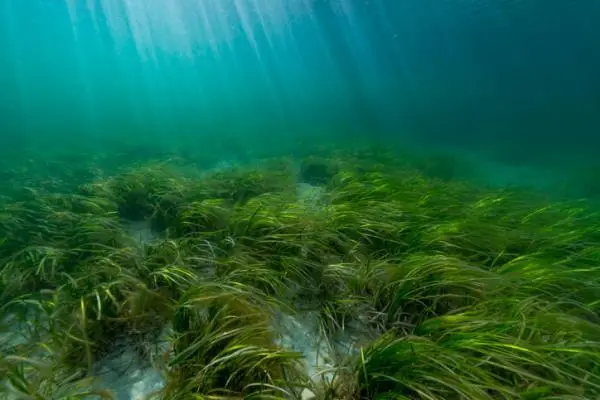Algae are organisms that have proven and continue to be of vital importance on our planet. However, despite their great importance, they are also great unknown to the general public, which ends up relegating them to a position of “marine plants”. But are algae plants or not? We already anticipate that algae are not plants. They share some characteristics with these, but they also have important distinctions between them. What are algae and why are they not considered plants? If you want to better clarify these doubts, join us in this interesting article.
Why are algae not plants
To begin with, we must define what we consider “plants”. If we refer to the species that belong to the Plantae kingdom, we would have to take into account that some algae are classified within this, although most are part of the Protista kingdom, which includes those organisms that are not animals, plants, fungi, or bacteria.
However, the usual meaning of the term plant is more limited, referring practically exclusively to embryophytes, those known as terrestrial planets, and which group bryophytes, ferns, clubmosses, and plants with seeds. And algae are not part of any of these groups.
Is there some kind of relationship between algae and plants? Of course yes. All embryophytes evolved from a certain group of green algae. So what is the difference between algae and plants?
- Algae develop almost entirely in an aquatic environment, so they do not need many of the structures that plants have developed.
- Algae have no roots that absorb water, no xylem or phloem .
- Also, unlike plants, algae can be unicellular and their embryos do not go through a diploid multicellular sporophyte stage, which plants do.
- Among other differences, when it comes to pigments, some algae have phycobilins, a type of pigment that is only found in algae and cyanobacteria.
The characteristics of algae
These are the main characteristics of algae :
- If we have to mention the characteristics of algae, the main and most striking would be their simple structure, which is called thallus and replaces the roots, stem, leaves and vascular tissue of plants . Since algae grow in aquatic environments, they do not need all these structures to absorb and conduct water.
- Algae are both unicellular and multicellular organisms , although in the latter case each cell performs all the functions instead of grouping together to form specialized tissues.
- They are capable of photosynthesis thanks to their pigments and chloroplasts, although not all are green pigmentation: those found at greater depths, such as brown and red algae, have developed more sensitive pigments capable of absorbing light where it barely reaches.
- Thanks to their ability to photosynthesize, they are autotrophic organisms , like plants.
- They can also reproduce both sexually and asexually.
- They usually develop in seas, lakes and rivers, either at the bottom of these or on the surface of their rocks, and their sizes are enormously varied: from microscopic, to some that exceed 50 meters in length.

Types of algae
Algae can be classified into 7 large types with well-differentiated characteristics:
Green algae
Its scientific name is Chlorophyta and it is mainly freshwater algae, although not exclusively. There are thousands of species of green algae, both unicellular and multicellular. Its cell walls are made of cellulose, with several chloroplasts and one or two flagella.
Red algae
With the scientific name Rhodophyta, these algae mainly inhabit oceans and seas in tropical areas, especially coral reefs. Their cells also have cellulose walls, but they do not have flagella or centrioles. They reproduce asexually by spores, or sexually with alternation of functions between generations.
Brown algae
Phaeophyta is among the most numerous in the world’s oceans. They have developed anchoring fabrics and air bags that allow them to float. Its asexual reproduction is by spores, while the sexual one is by gametes.
Greenish yellow algae
Xantohpyta does not comprise more than between 500 and 600 varieties. They are unicellular algae with cellulose and silica membranes, which have one or two flagella. They have chloroplasts but no pigments, hence their color, and they tend to inhabit fresh waters, forming small colonies.
Golden algae and diatoms
Chrysophyta is the most widespread of the single-celled algae. They inhabit both fresh and salty waters and diatoms, in fact, are a very important part of phytoplankton.
Fire algae
Pyrrophyta are divided into dinoflagellates and cryptocurrencies. The former forms the so-called red tides and give the group its popular name for its bioluminescence, which makes it seem that the sea is on fire at night. They can be very poisonous. The latter also share their ability to cause serious damage to the environment, although their coloration is more brownish.
Euglenid algae
The Euglenophyta do not have cell walls as such, although they protect their cells with a layer of proteins very similar to the cell walls of animal organisms. They have chloroplast, so they can photosynthesize much like plants.
Some examples of algae known and consumed by man are:
- Wakame.
- Kombu.
- Nori.
- Irish moss.
- Spirulina
- Agar-agar.
